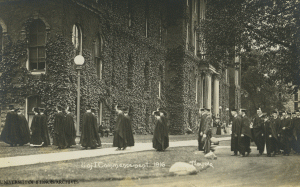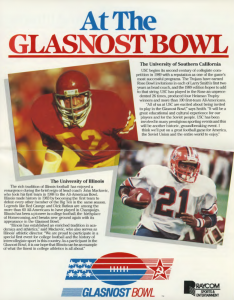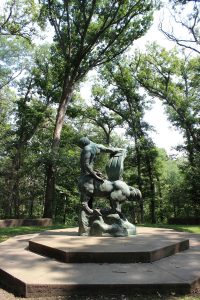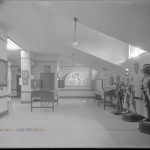
Written by Anna Trammell
As the end of the academic year draws near, Illini all over campus are daydreaming about summer travels on the horizon. Since the end of the 19th century, one of the primary hallmarks of travel has been the postcard. The first American postcard was copyrighted by John Charlton in 1861.[1] In 1873, government issued “postal cards” with a one-cent postage fee debuted.[2] At the 1893 World Colombian Exhibition in Chicago, picture postcards were sold as souvenirs.[3]
From there, postcard collecting and mailing increased in popularity and public demand eventually forced congress to grant the one-cent rate to privately printed cards in 1898.[4]
Postcards reached the height of their popularity in the first decades of the 20th century with over nine hundred million cards mailed in 1913 alone.[5] Continue reading “Greetings from Illinois: A Journey Through Postcards”


